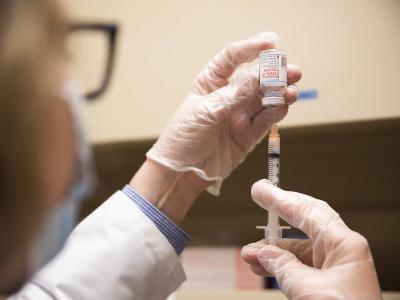Less than 1 in 20 children with COVID-19 have symptoms lasting longer than 4 weeks, and by 8 weeks, almost all have recovered, according to a study yesterday in The Lancet Child & Adolescent Health.
"We know from other studies that many children who catch coronavirus don't show any symptoms at all; and it will be reassuring for families to know that those children who do fall ill with COVID-19 are unlikely to suffer prolonged effects," said senior author Emma Duncan, PhD, in a King's College London press release.
"However, our research confirms that a small number do have a long illness duration with COVID-19, though these children too usually recover with time," she added. A commentary in the same journal outlines some off the issues with assessing data collected via an app, as the researchers did.
More than 98% recovered by 8 weeks
Researchers from King's College London used the UK ZOE COVID Symptom Study app from September 2020 to February 2021, coinciding with the reopening of schools, to look at 1,734 children 5 to 17 who had parents or caretakers logging possible symptoms.
The most common recorded symptoms for children with positive COVID-19 tests were headache (62.2%) and fatigue (55.0%), followed by fever in children ages 5 to 11 (43.7%) and sore throat in children ages 12 to 17 (51.0%).
Thirty-seven children presented at hospitals for care, but the study does not mention any deaths. By 4 weeks after symptom onset, 4.4% children still had symptoms, which diminished to 1.8% by 8 or more weeks.
On average, COVID-19 lasted 6 days, and in the first week, children had a median of 3 symptoms. Older age (12 to 17 years) was associated with an increased persistence and number of symptoms (7 days vs 5 days; 4 vs 3 median symptoms). Similarly, more older children had long COVID-19 than younger children (59 vs 18). Those who experienced long COVID-19 had a median of 6 symptoms during the first week and a median of 2 persisting symptoms at day 28.
The researchers also compared the 1,734 COVID-19 patients with counterparts in the app database who reported potential COVID-19 symptoms but had a negative diagnosis test. After matching for age, sex, and week of testing, the results showed that only 0.9% of COVID-negative children had symptoms lingering for 28 or more days. This control group did, however, have more symptoms (median, 9) during the first 4 weeks and, in the few that had persisting symptoms, after 4 weeks (median, 5).
"Our data highlight that other illnesses, such as colds and flu, can also have prolonged symptoms in children and it is important to consider this when planning for paediatric health services during the pandemic and beyond," said senior author Michael Absoud, PhD, in a Lancet press release.
"This will be particularly important given that the prevalence of these illnesses is likely to increase as physical distancing measures implemented to prevent the spread of COVID-19 are relaxed."
Comparative statistics and 'citizen science'
While these results are encouraging, the researchers acknowledge that UK Office for National Statistics (ONS) data as of April showed higher rates of long COVID-19 in children both 5 and 12 weeks after testing positive (9.8% to 13.0% and 7.4% to 8.2%, respectively).
They suggest the discrepancy may be because ONS requires two consecutive asymptomatic visits to conclude that an illness has resolved. Therefore, children who were asymptomatic for more than 1 week between symptoms could still be considered as symptomatic by ONS but not by their study.
A related commentary by Dana Mahr, PhD, and Bruno J. Strasser, PhD, highlights some shortcomings with the study's methodology. "The study in The Lancet Child & Adolescent Health by Erika Molteni and colleagues illustrates the potential and challenges of what has been termed citizen science," they write.
The study was able to look through data from almost 260,000 children, but at the same time, the final cohort over-represented children from higher-income households, the commentators say. It is also probable, they add, that the volunteers were more likely to participate in online communities that would contribute to the way they interpreted their children's illnesses.
"Entering data on a smartphone app is not equivalent to discussing with a paediatrician or health-care worker who can answer further questions and concerns of participants, an especially important factor for underserved communities," Mahr and Strasser write.
"In the end, the app has no emotive quality, even if those designing it do. Citizen science will continue to require a close interaction with professional medical researchers to turn unique illness experiences into research data."


















